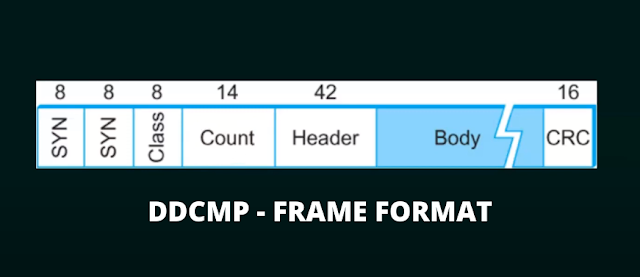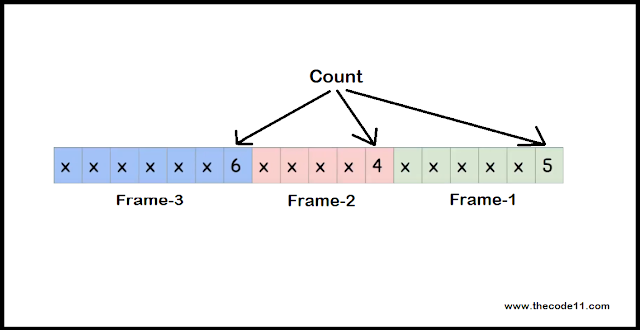In this tutorial you are going to learn about Digital Data Communication Message Protocol in Computer Networks.
Byte Oriented Approach
In a byte-oriented approach, we simply view the frames as a collection of bytes or characters.
We have basically three protocols:
- BISYNC - Binary Synchronous Communication Protocol
- PPP - Point-to-Point Protocol
- DDCMP - Digital Data Communication Message Protocol
Here, we are going to talk about DDCMP, which is the Digital Data Communication Message Protocol.
DDCMP
We know DDCMP is a byte-oriented communication protocol and of course this is a data link layer protocol. DDCMP was devised by Digital Equipment Corporation. Though DDCMP is a byte-oriented communications protocol like BISYNC or PPP, it is somewhat different. It is different because it is using a byte counting approach. There is a count field which is introduced in the frame format. This count field says how many bytes are contained in the frame body. It seems to be a good idea to include the number of bytes in the frame body. But unfortunately, there is a very big drawback with this count field which is discussed below.
Frame format of DDCMP
The frame format of DDCMP resembles like BISYNC because it has two synchronous fields and there is no end sequence. The two synchronous fields are indicating the start of the frame. Then we have a field called class, which is like the protocol field in the PPP. The two synchronous fields and the class are of eight bits. DDCMP has a new field in the frame format which is count, which is of 14 bits and then we have a header, a variable length body and the error detection technique at the last, which is the CRC.
Danger with The Count Field
There is a very serious drawback with the DDCMP protocol. The danger in DDCMP is with the count field. One danger with this approach is that, if transmission error could corrupt the count field, then the end of the frame would not be correctly detected by the receiver. Transmission errors can affect any bit pattern or bytes. If transmission error corrupts this count, then the frame structure goes into chaos.
Example of Framing Error in DDCMP
Suppose, if we have three frames, frame number one, frame number two and frame number three. In the figure you can see how the frame was created by the sender. Now let's assume 6, 4, 5 are the count fields. We know very well that there is a count field in every frame. So here, in frame number one - 5 is the count field, in frame number two - 4 is the count field and in frame number three - 6 is the count field.
When the sender sends this entire information to the receiver, the receiver first reads 5 as the count field and it understands the next five bytes belong to this frame. So, it understands that the next five bytes belong to one frame. Then it reads 4 as the count field and it understands that the next four bytes belong to frame number 2. Similarly, it reads 6 as the count field and the next six bytes belong to frame number 3.
Let's assume unfortunately, the transmission error has affected frame number two, that is 4 count field and this 4 is getting modified as 7. Because of this modification, the receiver understands that, this 7 means the next seven bits and these seven bytes belong to that particular frame. But actually, this is not the frame that was created by the sender. When the receiver treats this as a frame, that is frame number two in this case, it is a framing error. This is what is the danger with the count field.
This article on Digital Data Communication Message Protocol in Computer Networks is contributed by Rajnish Kumar. If you like TheCode11 and would like to contribute, you can also write your article to us. Here is our mail id - thecode11info@gmail.com

%20in%20Computer%20Networks.png)


